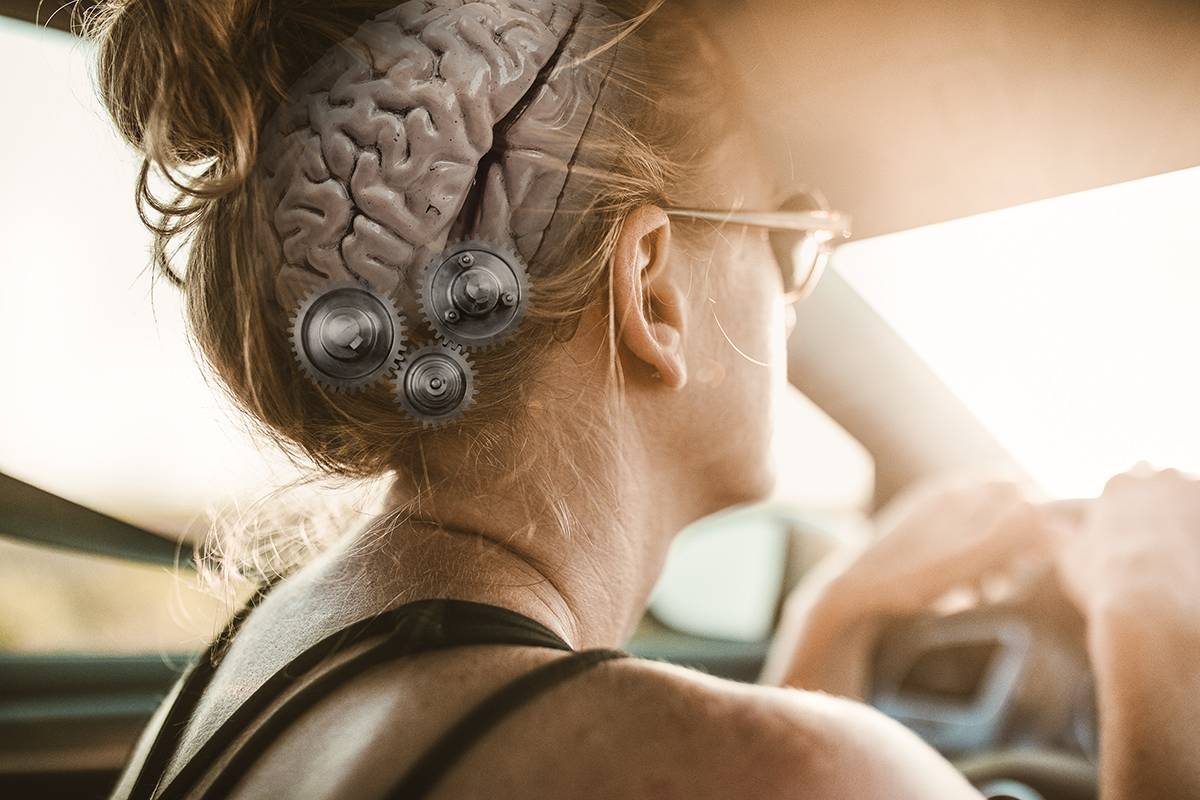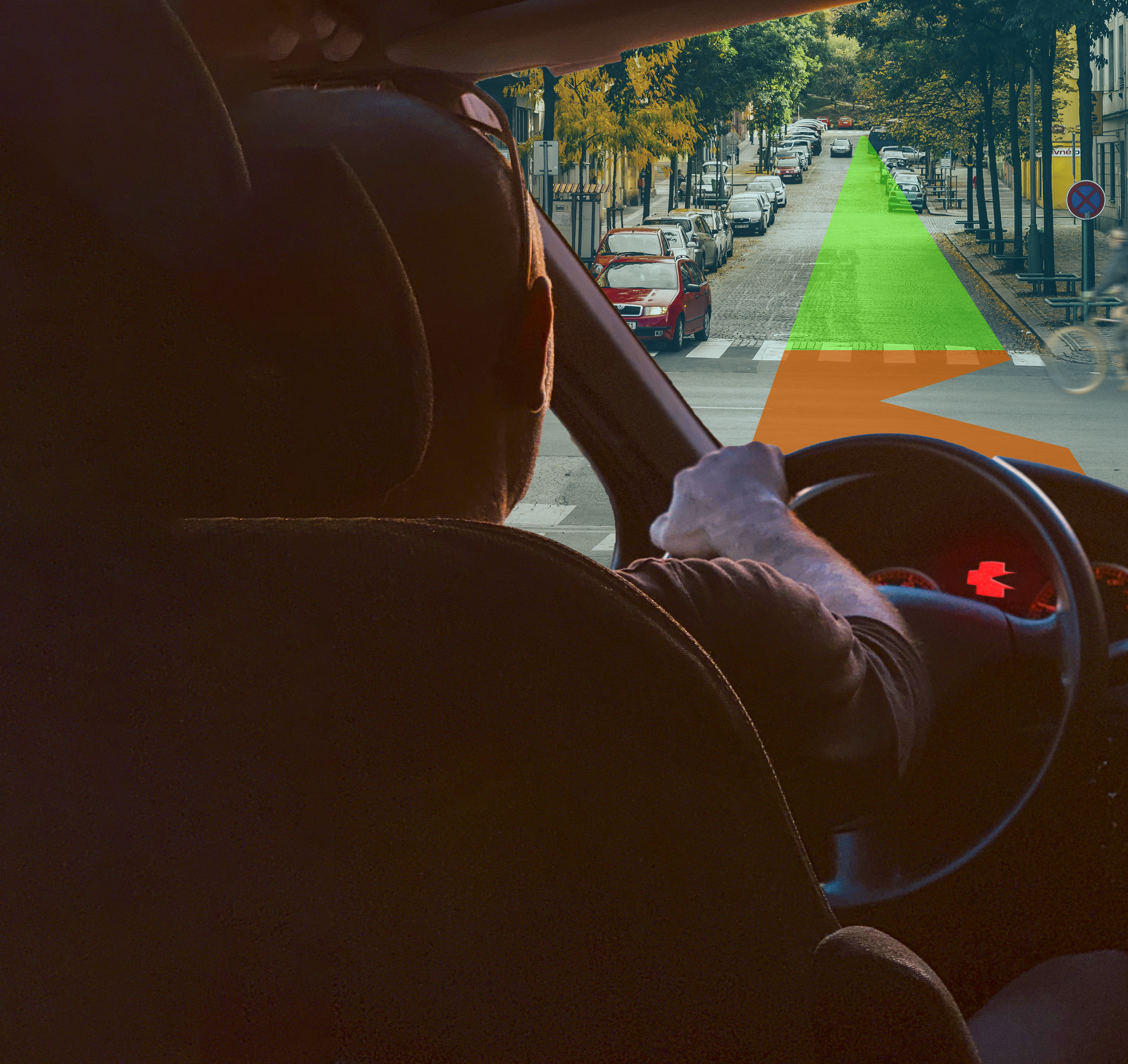Pulling drivers’ attention to the right place
When there’s lot of things happening around the road, it could be difficult to prioritize what is important to consider and not. Technology can help us detect potential issues, and a nudge can then help us redirect our attention to where it needs to be. MeBeSafe have developed a nudge that increase drivers’ attention in 6 out of 10 times.
Attention is a strange phenomenon. Sometimes you have a lot of it to spend, and sometimes you’ve almost totally run out of it. And your attention could be divided between internal matters; such as what to have for dinner; as well as external factors; such as people walking along the sideway when you’re driving.
The process of attention happens within the brain, and it’s notoriously hard for somebody else to know where you have placed it. So, nobody can actually make sure that you focused your attention right where it should be, such as on a cyclist about to bike out in front of your car. One of the MeBeSafe nudges set out to help you focus on that cyclist – but how could we know if something as abstract as your attention has actually changed?

One strong indication that you are aware of something is that you’re looking at it. But it’s impossible to know if you actually process that information consciously, or if your eye simply happens to rest at that place. The longer you look, the more likely it is that you have actively spotted something. But while you’re in traffic, there are always numerous other things you have to look towards as well. So, you don’t necessarily have to look at something for a long time to notice it.
A potential effect of noticing the cyclist could be that you slow down more to make space for them to pass or mitigate the effects of an impact. But slowing down is not always necessary, if the cyclist already will manage to pass safely. Then you just need to keep track of them. So to know which people have reacted, you need to know both the amount of time looking in the right direction as well as amount of speed decrease. This will capture both potential outcomes; watching the biker for a long time to see if you need to react; or directly spotting it and deciding to slow down.
MeBeSafe developed a nudge that is shown as a symbol in the head-up display.It looks like a stylized intersection and is placed in such a way, close to the windshield, so that the driver see it in their immediate peripheral view when they are looking at the road The closer the driver gets, the larger the symbol becomes. And the more critical the situation gets, the more red the symbol becomes. The symbol turns up when the driver is 6 seconds away from the intersection where a cyclist might cross, to make them aware and anticipate potentially crossing cyclists.
Over this time period, the ideal direction in which to look will change. When you’re far away, you don’t need to look so much towards the side to see the potential risk area as when you are very close – when the cyclist is directly to your left or right. It’s all about the perspective. MeBeSafe calculated the necessary viewing angles and used this for the evaluation of the gaze. When it comes to the speed, measuring is naturally much more straight-forward. A lower speed would indicate that you’ve reacted.

22 participants were recruited to come and drive an encounter-prone route in Eindhoven in a nudge-equipped car. The nudge was activated for the whole ride, but at a few locations it also indicated that something was approaching when there in fact was nothing there. And at some other locations, it didn’t activate, although it could have. This made it possible to compare the effects of the nudge, to see if it was the nudge and not the approaching intersection per se that drove the attention.
And very well indeed, it was found that drivers overall spend more time looking towards the potential hazard. 56% of the drivers looked more in the correct direction and 64% decreased their speed.
It’s worth noticing that very short glances towards the dangerous direction could be enough for a driver to get aware and slow down. These so-called micro-glances could however not be captured with the cameras used in the field trial. There’s still more exciting research to be done, but the results have so far shown the promising future of having such a nudging system in addition to current advanced driver assistant systems.
Today, the nudge-system is developed to support a human driver. With such a measure, drivers will be notified well ahead and have enough time to react – thereby preventing accidents from even getting close to happening. But in a future with self-driving cars, the underlying systems detecting cyclists and predicting their behaviour, often based on artificial intelligence, will be essential for a safe performance of such automated driving functions. Together with the other measures developed by MeBeSafe, this is an important step in the grand mission of making traffic safer – with proactive measures that remove accidents before they even were thought of.
